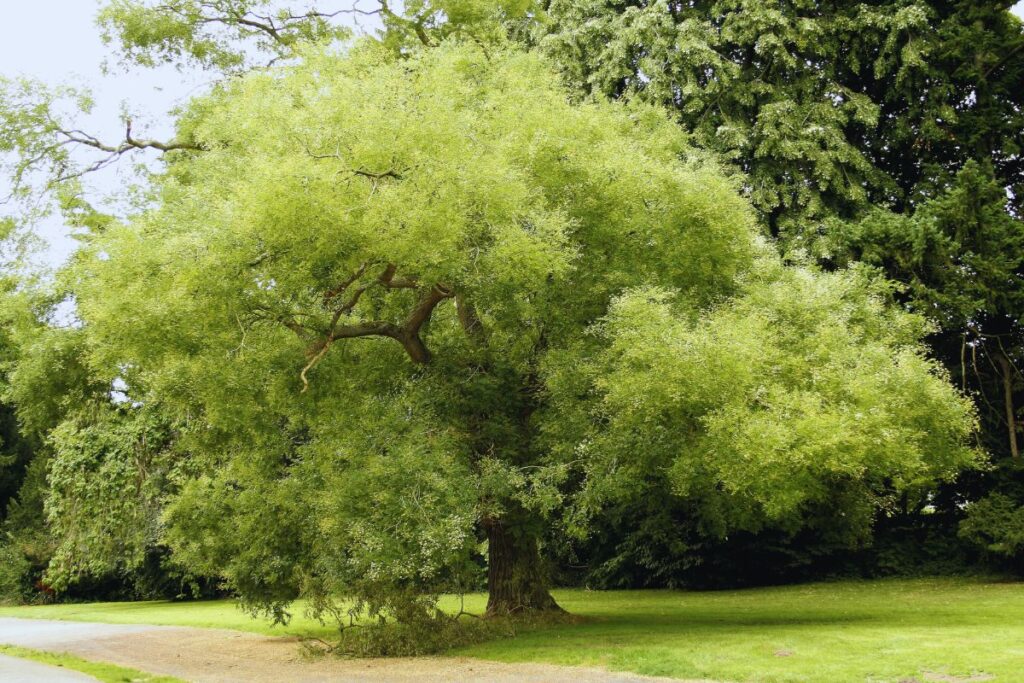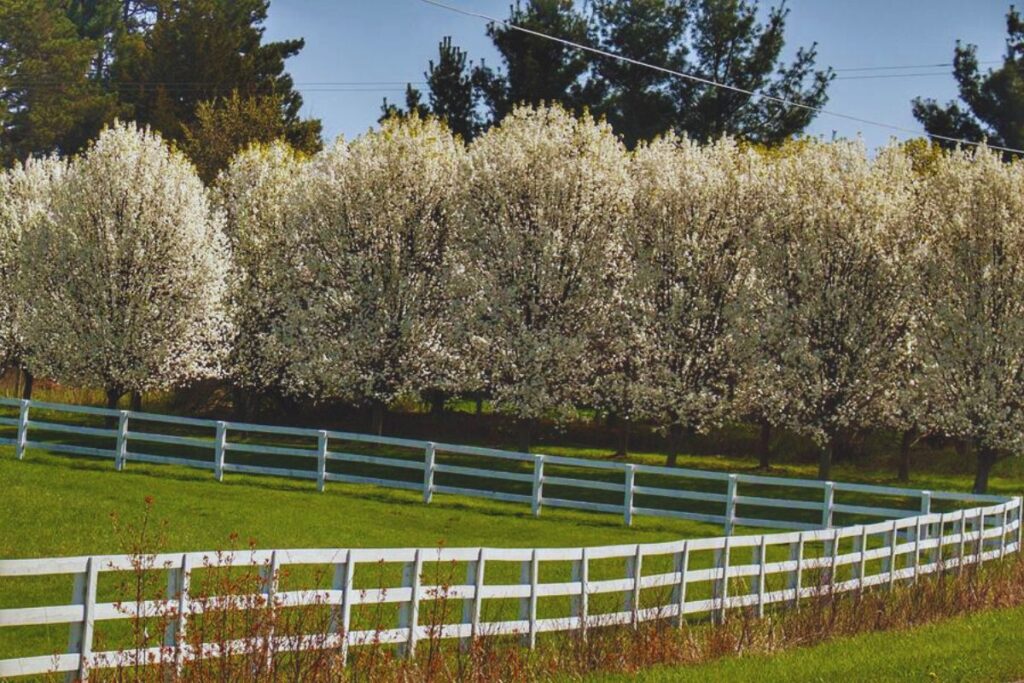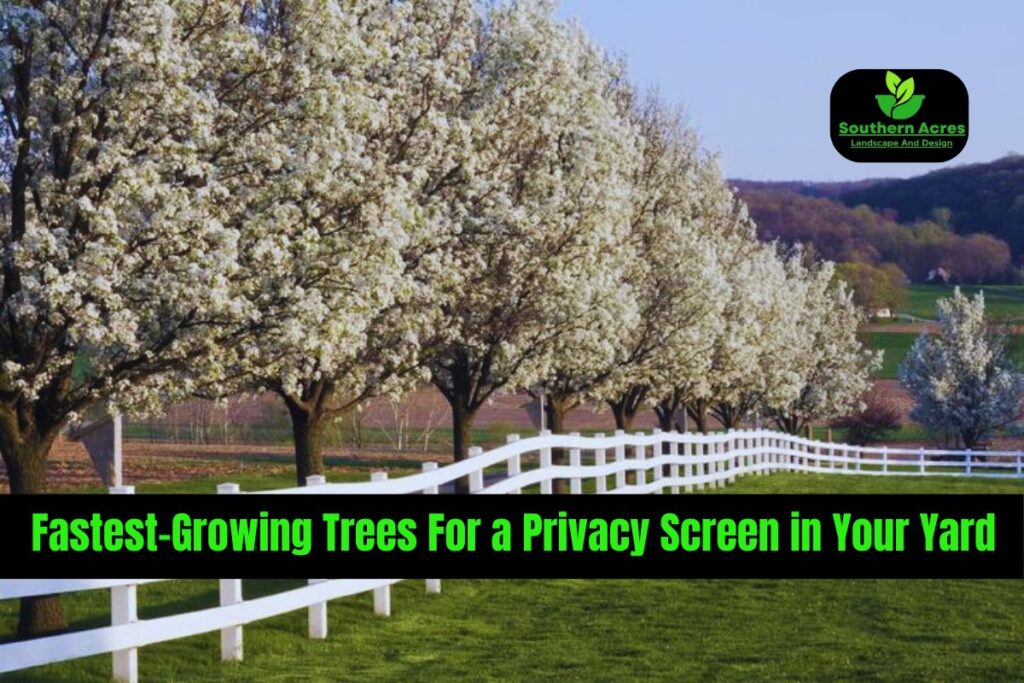The plants that grow in trees and grab heights near about 50 ft reach maturity in 20-30 years, and then they give shade, privacy, or wind protection to your place. Instead of slow-growing plants, they take double time which may take 2x as long to mature. However, the Fastest growth has many disadvantages: sometimes they don’t have such a long life as slow-growing plants. Moreover, their wood is observed as very strong as it has the ability to tackle drastic factors.
By understanding these things it’s very important to choose a place smartly where trees can grow properly and this is the way you can enhance the beauty of your house easily with smart planning.
Top 8 Fastest-Growing Trees
It’s very important to select a location that is on distance from residential areas, driving areas,utility lines to eliminate the risk of any damage during storms and other environmental tragedies. It is suggested to entertain the placement in link to septic lines and sidewalks, as tree roots may pose future problems. So without any second thought just kick start your yard betterment.
1. Bald Cypress
Bald cypress is an excellent option for wet or swampy areas, as it contains less insect or disease issues and is among the few trees capable of thriving in standing water. Its foliage undergoes a stunning transformation to russet red in late autumn before shedding, revealing its appealing reddish-brown bark. It goes with the growth rate of 18 to 24 inches per year and reaches to a height of 100 feet and a width goes upto 50ft. This plant needs sunlight so it cannot survive in shade
2. Cottonwoods
Cottonwoods, also known as Populus deltoides, are known for their prevalence along rivers and other humid regions in the eastern United States, Also they are known for their fragile, brittle wood. This swiftly growing tree can reach heights of up to 70 feet, with a growth rate of 3 to 4 feet per year. Lombardy poplars (Populus nigra var. italica), their counterparts, are often utilized as screens, reaching heights of 40 to 50 feet. Cottonwood care requirements may vary depending on the specific variety, but generally, they thrive in Zones 3-9, preferring full sun or partial shade and well-drained soil.
3. European Black Alder
European black alder (Alnus glutinosa) thrives in low, damp landscape areas where many other trees struggle to survive. Native to most parts of Europe, this tree boasts an expansive root system that can span over 16 feet. Therefore, it’s advisable to avoid planting it near sidewalks and sewer lines. Initially, this fast-growing tree matures rapidly, but its growth rate slows down to a steady 12 to 15 inches per year as it ages. Ultimately, it can reach heights of 40 to 60 feet and spreads 20 to 40 feet wide. For optimal growth, plant it in damp soil with full sun or partial shade, ideally in Zones 4-8.
4. Gum Tree
Gum trees (Eucalyptus spp.) are robust and resilient, making them ideal for anchoring a western landscape while providing rapid growth for privacy and shade. It’s essential to plant them in areas where their fallen leaves and stems won’t pose any issues. These trees typically grow at a rate of two to three feet per year and vary in height from 25 to 70 feet, depending on the species. However, they may not thrive in the high heat and humidity of the southeast. To ensure optimal growth, plant gum trees in a location with full sun and well-drained soil, ideally in Zones 9-10.

5. Japanese Pagoda Tree
Thriving within a specific range in the United States, the Japanese pagoda tree (Sophora japonica) is low-maintenance and blooms with creamy flowers in the summer. Originating from China and Japan, this rapidly growing tree adds approximately 12 to 15 inches to its height each year and can ultimately reach impressive dimensions of 75 feet in both height and width. Japanese pagoda trees are adaptable to full sun or partial shade and require nutrient-rich, well-drained soil, thriving best within Zones 6-8
(and temperate regions of Zone 5).
6. Leyland Cypress
Leyland cypress serves as an excellent choice for either singular planting or grouping to create a tall, rapidly growing hedge, ideal for privacy and screening purposes. Annually it grows 1-3 feet and reaches up to 70 ft. Leyland cypress thrives in full sun and well-drained soil, thriving best within Zones 7-10. To prevent it from reaching towering heights, regular pruning is recommended to maintain size control.
7. Implement Silver Maple and Red Maple
The silver maple stands out as one of the most prevalent trees across the United States, hailing from the eastern regions of North America. With an annual growth rate ranging from one to two feet, it can attain towering heights of up to 100 feet and spread out to 70 feet in width. Although valued as a common shade provider, the silver maple is marred by its shallow roots and fragile branches. Conversely, its relative, the red maple (Acer rubrum), also native to North America, boasts striking autumn foliage. Red maples generally grow to medium t size, and touch heights of 50 feet and spreading 40 feet wide. These require half sun or also can survive in shade and soil should be well drained.
8. Tulip Tree
Tulip trees are yellow-orange spring blossoms carrying different leaves which give the exotic look. Tulip trees are vibrant and color-popping. These trees are generally 15 to 18 inches annually, and give the height 100 feet. They have very weak spots they can break easily, young trees can be trained to develop wide, sturdy branch angles, mitigating the risk of splitting. Tulip trees thrive in Zones 5-9, flourishing in conditions of full sun or partial shade and well-drained soil.

Frequently Asked Questions
What are fast-growing trees?
The plants that grow in trees and grab heights near about 50 ft reach maturity in 20-30 years,then they give shade, privacy, or wind protection to your place. Instead of slow-growing plants, they take double time which may take 2x as long to mature.
Why are fast-growing trees desirable for privacy screens?
Fast-growing trees are preferred for privacy screens because they can quickly create a dense barrier, offering privacy and screening from neighboring properties or unwanted views.
Give qualities of fast-growing trees.
Fast-growing trees’ instant fast-growing rate,their range is in between 11-13 ft . They have qualities that can control soil conditions,ability to cope up in any weather climate, and less care required.
What are the disadvantages of fast-growing trees?
Fastest growth has many disadvantages: sometimes they don’t have such a long life as slow-growing plants.
How do we ensure the growth of fast-growing trees in my yard?
To ensure the successful growth of fast-growing trees, we should be aware of the environmental factors and the type of soil we use. Give proper space and use appropriate planting methods, irrigation system should be properly maintained. Regular cutting is required for better growth.
Which zones are suitable for planting fast-growing trees for privacy screens?
Zone 3 to 10 is considered as the best for planting fast-growing trees for privacy screens.
Are there any specific precautions to consider when planting fast-growing trees for privacy screens?
Yes, it’s important to consider potential risks such as proximity to utility lines, buildings, and driveways to mitigate damage from falling branches or roots. Additionally, avoid planting near sidewalks or sewer lines to prevent root-related issues. Regular maintenance, including pruning, is also essential to ensure the health and longevity of the trees.
What are some popular choices for fast-growing trees for privacy screens?
Fast-growing varieties are Leyland cypress, bald cypress, European black alder, and Japanese pagoda tree. These are the fast-growing trees you can implement in your garden.
How can we use fast-growing for purposes other than privacy screens?
Yes, fast-growing trees can serve various purposes in addition to privacy screens, such as providing shade, windbreaks, or ornamental value in landscapes. They can also help improve air quality, reduce noise pollution, and attract wildlife to the area.
The Conclusion
In conclusion, when go are thinking of implementing fast-growing plants it its very important to understand about the environmental factors and it’s also important to understand the type of soil required and climatic conditions also plays a vital role in it. So zone 3 to 10 is considered as the best for planting fast-growing trees for privacy screens.
Read More:
Top 10 Backyard Landscaping Ideas to Upgrade Your Hangout Spots
Best Ways To Create Rock Garden

